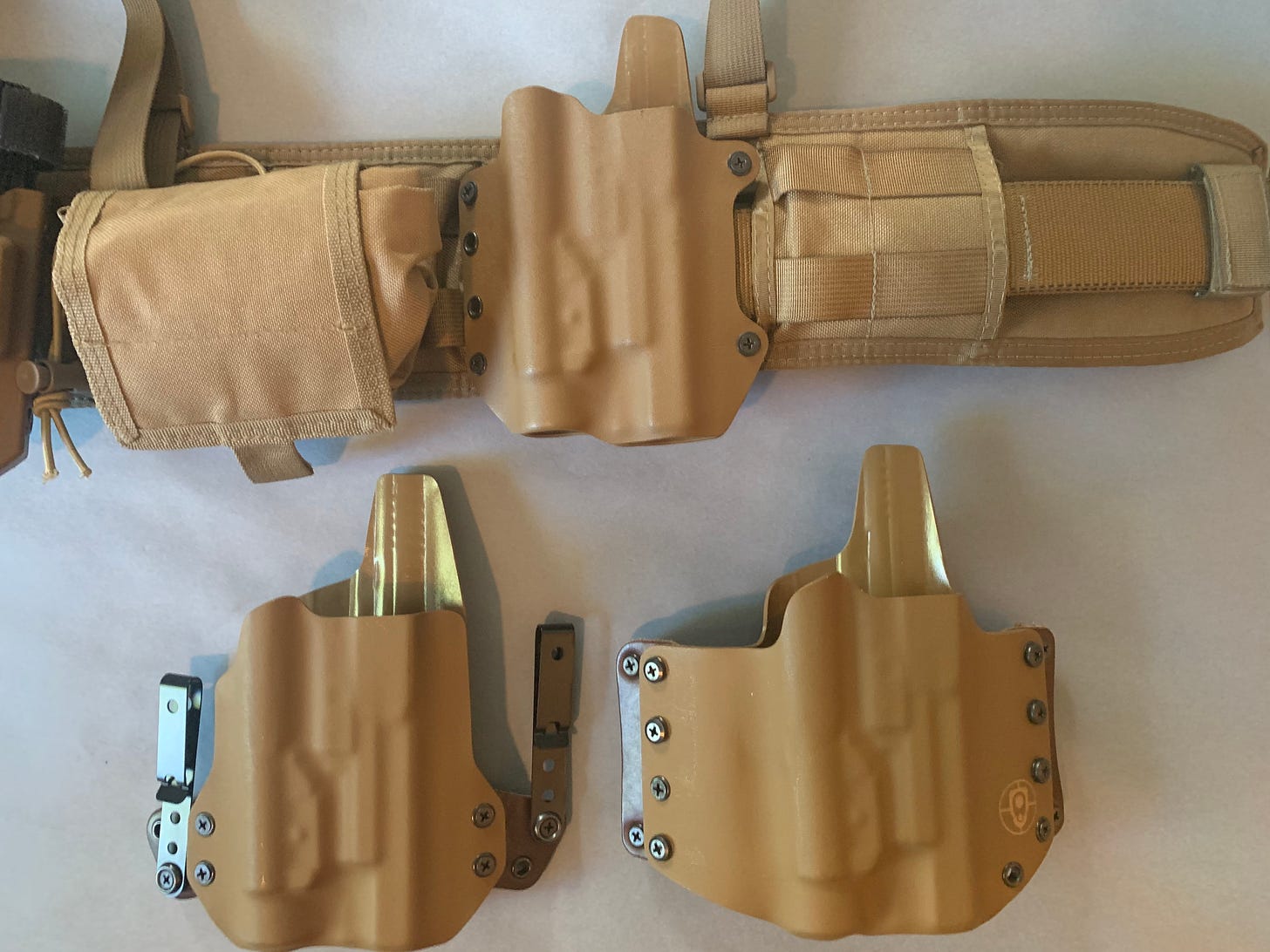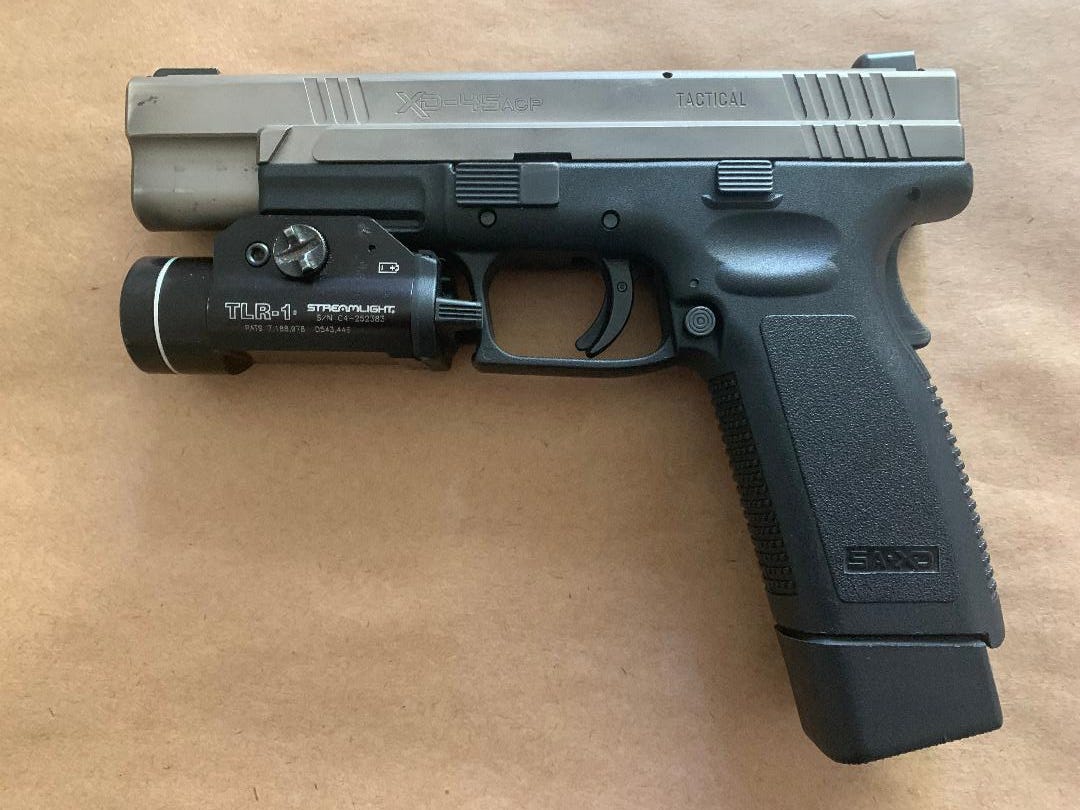Consistency, weapon retention and other concealed-carry tips
Here are some tried-and-true tips for carrying a concealed handgun that have served me well.

Lee’s note: What follows are some concealed carry tips that have served me well over the years. Like everything else that’s published online, I hope you can take away a couple ideas that work for you.
Consistency
When it comes to concealed carry, consistency is king.
Folks who constantly change their firearm, their holster or their carry method — strong side, appendix, shoulder, pocket or off-body — won’t develop proper muscle memory.
To put it plainly, under stress they might go the the wrong location and try to draw a pistol that’s not there, or they might be unfamiliar with their holster or their handgun.
I strongly recommend carrying concealed handguns on your strong side.
I also recommend using the same holster — which is extremely important if you use a security holster — and the same handgun.
I use the same style of holster whether I’m training with my war-belt at the range, or carrying concealed — either inside or outside of the waistband.
My pistol is always in the same spot, and it’s always in the exact same type of holster.
Also, I prefer Kydex over everything else. It doesn’t lose its shape, like leather can. It holds the weapon securely, and it doesn’t mar the gun’s finish.
The best holsters I’ve found, and I’ve tried more than a few, are made by BlackPoint Tactical. They make holsters and equipment for this country’s most elite warriors. I’ve been using their gear for years and it’s never let me down. It’s not that much more than other brands, and it’s certainly worth the price.
Bring enough gun
I carry a full-sized handgun.
Sure, it would be infinitely more comfortable to pocket a Glock 43, but I want what smaller handguns cannot offer: ammo capacity and shootability.
I’ve shot the G43 and others. They function fine, but I cannot hit nearly as well as I can with a full-sized handgun, especially at distance.
I can get more meat on a full-sized weapon — a much better grip — so follow-up shots are quicker, and they are key to winning a gunfight.
Besides, since there’s no penalty for having ammo left over after a gunfight, I want more than six rounds.
For me, it’s a tradeoff. I’m trading comfort and concealability for a firearm that will perform better when it really matters, so I’ll make the necessary wardrobe changes and tolerate occasional pokes in the ribs.
In my humble opinion, I wouldn’t carry anything smaller than a Glock 19.
While there are a lot of online experts extolling the virtues of über-concealable smallish pistols, most of these “experts” have never fired a shot in anger. Those of us who have will tell you to bring a real gun to a gunfight — and the bigger the better.

Light it up
I believe every defensive weapon should have a light, and this is especially true for concealed-carry handguns.
Statistics for officer-involved shootings show most badness occurs at night, so odds are good that if you need to defend yourself, it will be after sunset. Therefore, you need to see what you’re shooting at before you shoot at it.
Over the years, I’ve heard from some folks who claim a weapon light will “give away your position to the enemy.” While this may be true on a conventional battlefield, it’s not a factor in a dark alley or while walking away from an ATM. Besides, 150-500 lumens of white light blasted into the face of an assailant can offer you a nice edge.
I’ve tried all of the major brands. I prefer Surefire and Streamlight, but the Streamlight TLR-1 offers the best value for your money. They’re also incredibly rugged. You could pound in nails with a TLR-1.
Weapon retention
There are some whackos out there who will try to take away your handgun if they can see it.
This constitutes a serious attack and is not to be taken lightly.
Therefore, take a weapon retention class. They’re worth any price.
In a nutshell — and this is certainly not a substitute for a good training class — selecting the proper weapon retention technique depends upon whose hand gets to the weapon first.
If the bad guy gets his hand on my gun first, I am going to lock it into place by putting my hand over his and pushing down hard, which also keeps the weapon in the holster. (This is why you need a good quality holster and gun belt). Then, I am going to VIOLENTLY spin my body down and to the left. If you do this forcefully enough, the popping sounds you’ll hear will be bones breaking in the bad guy’s arm, while he’s going for a helluva ride.
If I get my hand on my pistol first, and he tries to keep it in the holster by forcing his hand on top of mine, I will drop straight down as if I’m about to kneel, while pulling up on the pistol. Once the barrel clears the holster, I’ll use my weak hand to push the barrel toward the bad guy’s midsection. Then, it’s time to decide whether to use deadly force.
If you do fire a round, odds are good the weapon won’t cycle, so you’ll likely need to clear the malfunction, while the bad guy’s contemplating his second navel.
Practice drawing from concealment
When I was a rookie cop, I met an FBI agent who kept a roll of quarters in his front suit pocket. If he shifted his weight correctly, he claimed, his suit would swing back on its own exposing his pistol, so he could draw unencumbered.
After I’d been on the job a few more years, I realized he was full of crap, since FBI agents don’t need to draw their guns. They usually arrive at a crime scene hours after the bad guy has fled…
For the rest of us mortals, drawing from concealment requires constant training.
Most public ranges won’t even allow you to think about drawing from concealment at their facility, so train dry at home.
For the most part, I train using two basic concealment options — shirts and jackets — and I practice sweeping the garments with both hands. While a weak-hand sweep is preferred, as it allows for a faster draw, it doesn’t always work. Sometimes, clothing can snag and you’ll need to sweep it with your strong hand.
There are no absolute, 100% effective sweeping techniques. Once you’ve practiced drawing from concealment a few thousand times, you’ll realize that, and you’ll know what works best for you.
As always, thanks for your time.
Lee




I am a member of TWAW (The well armed women's gun club) we train everyday driving home the object of safety always. We educate, equip and empower women. That was a great article and impressive information. Thanks for putting it out there. I will pass it on to my ladies.
Lee, the feature I like about your articles is that you are always giving common sense tips and advice that really works. Thank you, sir, and keep up the great work!